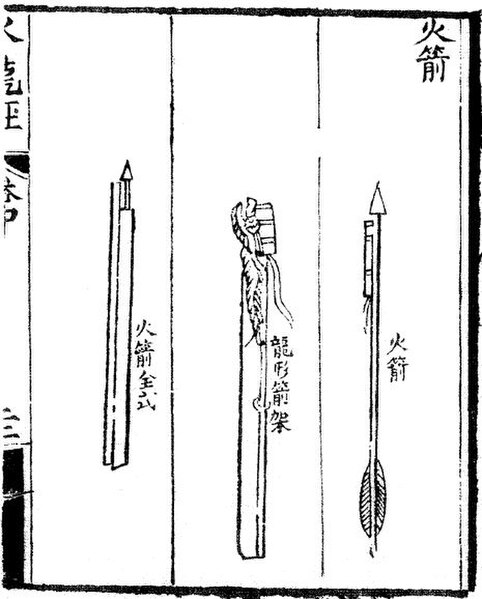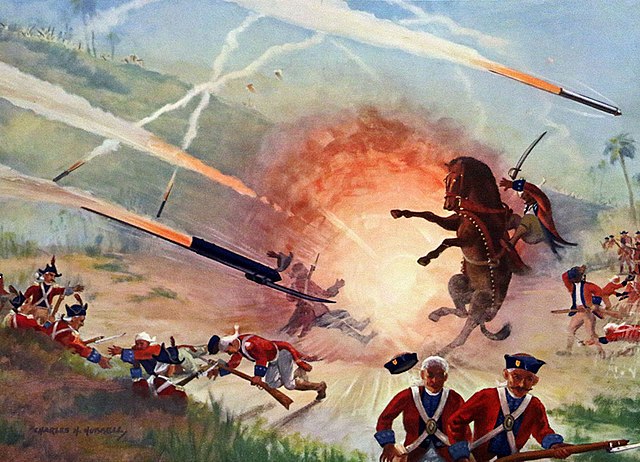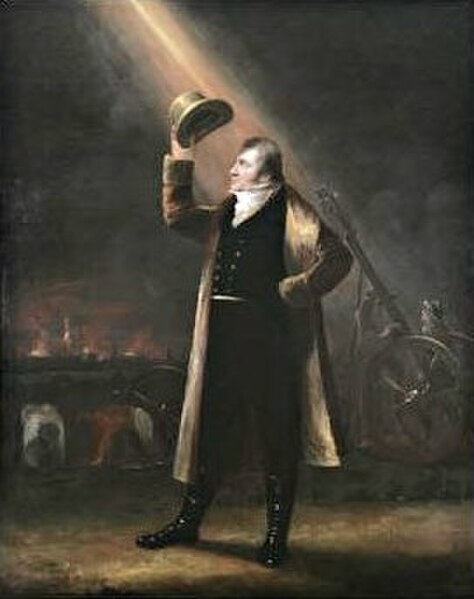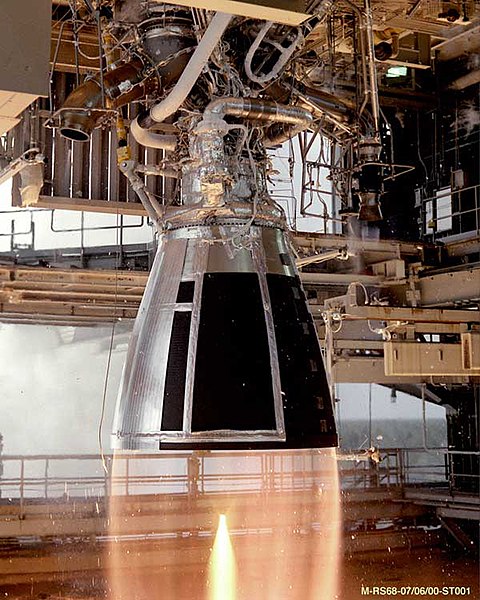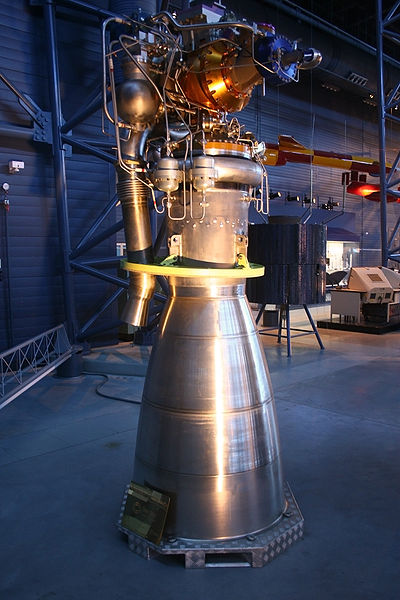A rocket is a vehicle that uses jet propulsion to accelerate without using the surrounding air. A rocket engine produces thrust by reaction to exhaust expelled at high speed. Rocket engines work entirely from propellant carried within the vehicle; therefore a rocket can fly in the vacuum of space. Rockets work more efficiently in a vacuum and incur a loss of thrust due to the opposing pressure of the atmosphere.
A Soyuz-FG rocket launches from "Gagarin's Start" (Site 1/5), Baikonur Cosmodrome
Rocket arrows depicted in the Huolongjing: "fire arrow", "dragon-shaped arrow frame", and a "complete fire arrow"
Mysorean rockets and rocket artillery used to defeat an East India Company battalion during the Battle of Guntur
William Congreve at the bombardment of Copenhagen (1807) during the Napoleonic Wars
A rocket engine uses stored rocket propellants as the reaction mass for forming a high-speed propulsive jet of fluid, usually high-temperature gas. Rocket engines are reaction engines, producing thrust by ejecting mass rearward, in accordance with Newton's third law. Most rocket engines use the combustion of reactive chemicals to supply the necessary energy, but non-combusting forms such as cold gas thrusters and nuclear thermal rockets also exist. Vehicles propelled by rocket engines are commonly used by ballistic missiles and rockets. Rocket vehicles carry their own oxidiser, unlike most combustion engines, so rocket engines can be used in a vacuum to propel spacecraft and ballistic missiles.
RS-68 being tested at NASA's Stennis Space Center
Viking 5C rocket engine used on Ariane 1 through Ariane 4
Armadillo Aerospace's quad vehicle showing visible banding (shock diamonds) in the exhaust jet


